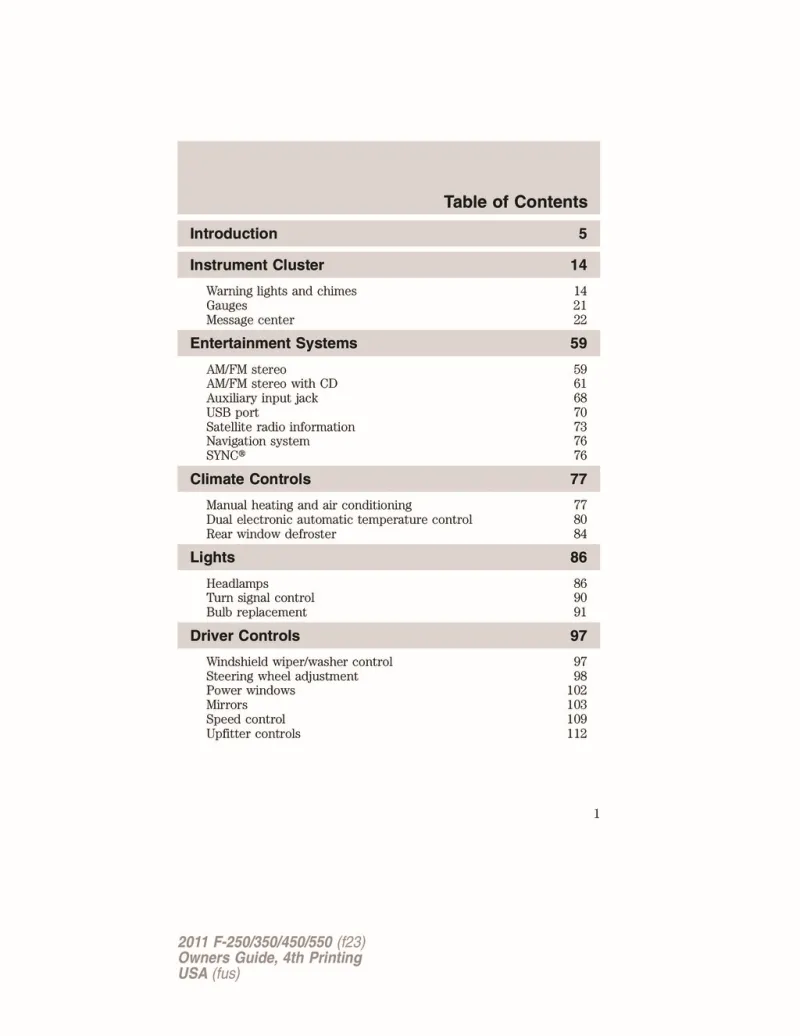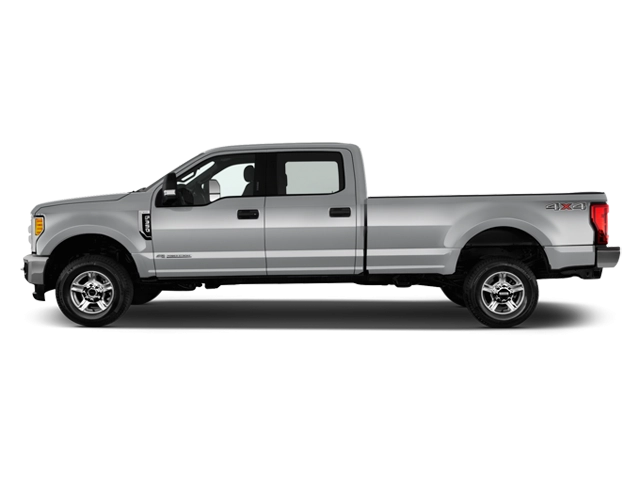2011 Ford F350 Owner's Manual

Table of Contents
2011 Ford F350 Overview
Introduction
The 2011 Ford F350 is a robust and dependable truck that stands tall among its peers in the heavy-duty segment. Boasting a rugged build and unparalleled towing capabilities, it is the ultimate choice for consumers seeking power, functionality, and comfort. Ideal for both work and leisure, this model takes the iconic F-Series to new heights, catering to a diverse range of truck enthusiasts and practical users alike.
Powertrains
The 2011 F350 offers two impressive powertrains that ensure optimal performance for any task. The standard engine is a 6.2-liter V8, delivering 385 horsepower and 405 lb-ft of torque. For those seeking even greater power, Ford's 6.7-liter Power Stroke turbo-diesel V8 engine is available, producing an astonishing 400 horsepower and an incredible 800 lb-ft of torque. Both engines are paired with a six-speed automatic transmission, enabling seamless gear shifts and improved fuel efficiency, making this truck a formidable contender in the heavy-duty market.
Trims
The F350 comes in several trims to cater to varying needs and budgets, including the XL, XLT, Lariat, King Ranch, and Platinum. Each trim level boasts different interior styles and configurations, offering a blend of practicality and luxury, from the bare-bones utilitarian XL to the lavish Platinum. Whether you need a workhorse or a comfortable family vehicle, the F350 has a suitable option.
Features
Innovative features adorn the 2011 Ford F350, enhancing both capability and comfort. Standard offerings include a tilt steering wheel, stability control, and a comprehensive audio system. Higher trims boast luxurious leather seating, advanced navigation systems, and premium sound systems, ensuring that each ride is an enjoyable experience. Safety features, including multiple airbags and robust chassis design, provide peace of mind whether you're on the job or the open road.
Owner's Manual
The owner’s manual for the 2011 Ford F350 is a valuable resource for any owner. Packed with essential information on operation, maintenance, and troubleshooting, it ensures drivers can make the most of their vehicle. Detailed sections cover everything from towing capacities to recommended service intervals, equipping owners with the knowledge needed to maintain their truck’s performance and reliability over time.
User manual download
The Ford F350 owner manual for the 2011 model year is to be found in PDF downloadable format on this page. The owner manual for the model year 2011 is free and in English, but the repair manuals are usually not easy to get and may cost more.
Manual Questions
Fill the form below and someone will help you!

